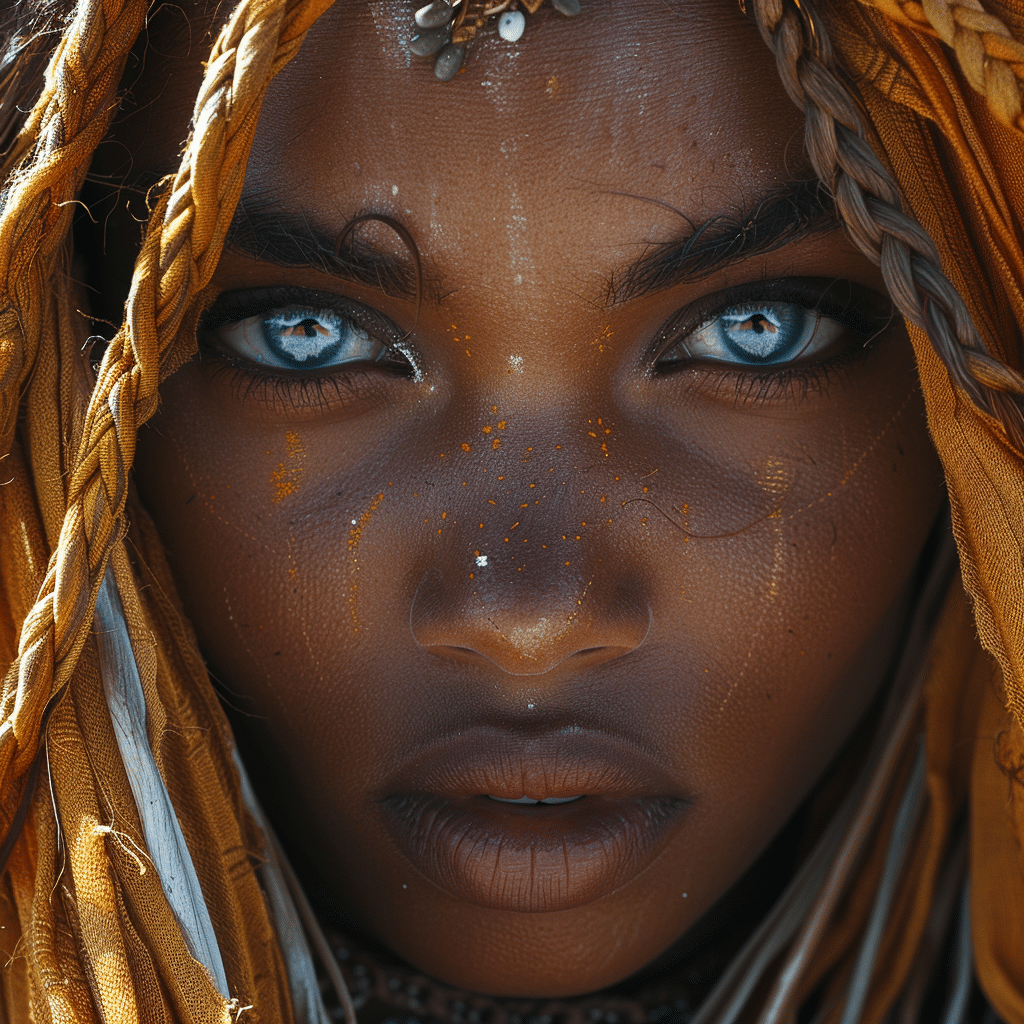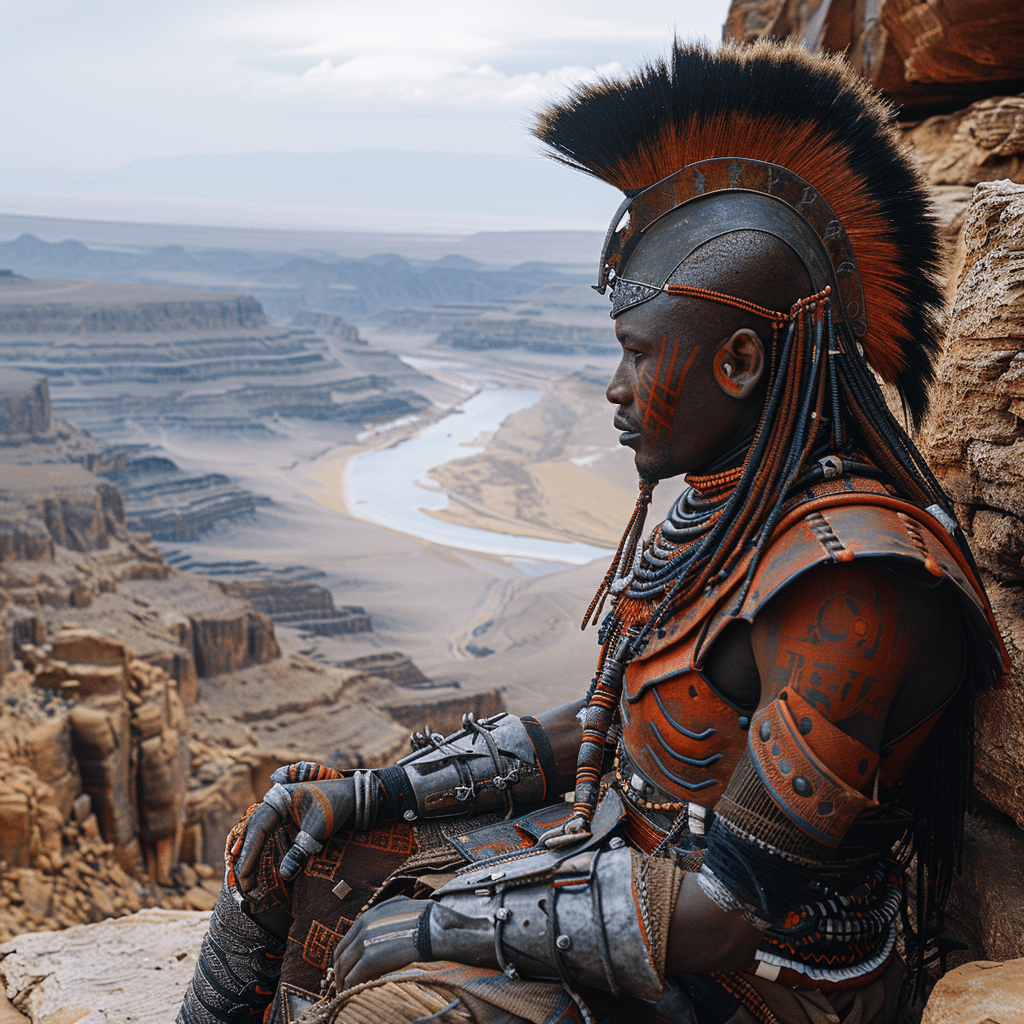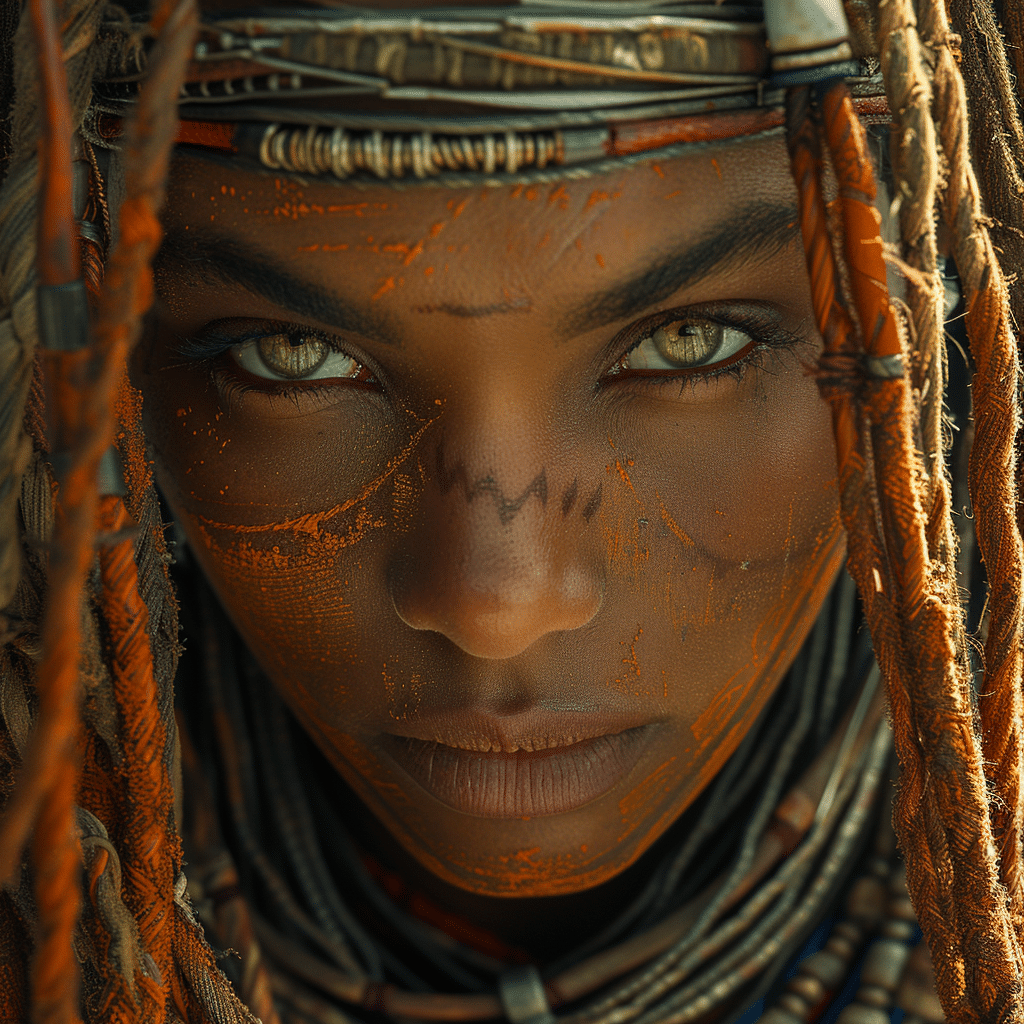The Himba Tribe: A Living Heritage
Nestled within the arid expanses of northern Namibia, the Himba tribe stands as one of the last truly nomadic cultures in Africa. These resilient people offer a unique repository of ancient traditions and customs that have thrived for centuries. By delving into the intricate way of life of the Himba tribe, we can gain invaluable insights into a world that seamlessly marries the past with the present.
The Himba Way of Life
The Himba people are pastoral nomads, a lifestyle that revolves around herding cattle and goats. Their days are spent searching for water and pastures, a quest made increasingly challenging by changing climate patterns. Despite this, their unyielding spirit and innovative survival strategies have allowed them to thrive.
Villages are small and familial, each consisting of several huts made from mud, dung, and wooden poles. At the heart of these communities lies the central kraal, where livestock is kept. This structure is not merely practical but also a focal point of their community life, symbolizing their close-knit, interdependent way of living.
The Role of Cattle in Himba Culture
Cattle are far more than just livestock to the Himba tribe; they form the economic backbone of their society. Referred to as a form of currency and social status, cattle are integral to transactions, dowries, and even conflicts. This highlights their indispensable role in Himba social structure. Moreover, cattle carry immense ritualistic significance. Many ceremonies—dedicated to ancestors and deities—often include elaborate sacrifices that underscore their spiritual importance.

Himba Tribe Women: Custodians of Culture
Himba tribe women are indeed the bedrock of their cultural preservation, embodying roles that extend well beyond traditional household chores.
Traditional Attire and Hairstyles
One of the most distinctive aspects is the Himba women’s use of otjize paste. This mixture of butter, fat, and red ochre serves as a natural sunscreen and insect repellent. However, its cultural importance is immense, symbolizing the earth’s rich red color, a vital part of their identity.
Hairstyles among the Himba tribe are potent status symbols. Young girls wear two plaits forward, while married women adorn themselves with more elaborate braids woven with extensions and ornaments. These intricate hairstyles signify age, social status, and rites of passage, turning the simple act of hairdressing into an emblem of their cultural heritage.
Roles and Responsibilities
Himba women wield significant authority at home, unlike many patriarchal societies. They oversee household affairs, educate the children, and manage food supplies, playing roles that command respect and influence.
Furthermore, women partake in community decisions, maintain ancestral shrines, and lead various rites. Their roles in Himba society are pivotal, making them indispensable custodians of their rich traditions.

| Aspect | Description |
| Location | Northern Namibia, primarily in the Kunene region |
| Population | Approximately 50,000 people |
| Language | Otjihimba dialect of the Herero language |
| Social Structure | Semi-nomadic pastoralists; society organized into clans governed by patrilineal and matrilineal descent |
| Livelihood | Primarily livestock herding (cattle and goats); some agriculture and hunting |
| Housing | Traditional huts made from a mixture of earth, dung, and sticks |
| Clothing | Minimalistic; women known for wearing skirts made of goat skins and red ochre body paint |
| Adornment | Women cover skin and hair with a mixture of butter, ash, and ochre (otjize) |
| Initiation Rites | Various ceremonies marking significant life stages, including puberty and marriage |
| Religion | Animism; ancestor worship and belief in the god Mukuru |
| Important Customs | Extended mourning rituals; bride-wealth negotiations |
| Diet | Primarily milk and meat from livestock; seasonal fruits and vegetables |
| Challenges | Access to modern amenities, healthcare, education; pressures from modernization and tourism |
| Cultural Significance | Renowned for unique traditions, cultural resilience, and distinctive appearance |
| Recent Changes | Increasing interactions with tourists; some adaptation to modern technology |
Enchanting Himba Rituals and Beliefs
Ancestor Worship
Ancestor worship is a central tenet of Himba spiritual life. Believed to act as intermediaries between the living and the gods, ancestors receive frequent offerings at sacred family fire altars. These rituals are not merely symbolic; they involve elaborate ceremonies complete with dances, chants, and the lighting of fires, aiming to communicate directly with the spiritual world.
Coming-of-Age Rituals
The transition of Himba youths into adulthood is marked by significant ceremonies. For girls, the Efundula ceremony is a multi-day event celebrating their journey into womanhood. It involves body painting, feasting, and endurance trials, all of which signify readiness for marriage.
For boys, initiation rites include grazing the family cattle alone, symbolizing their journey toward manhood and responsibility. These ceremonies are key milestones, deeply entrenched in Himba culture.
Modern Influences and Conservation Efforts
Impact of Tourism
Tourism has emerged as an economic boon for many Himba villages, offering cultural tours that provide visitors a glimpse into their ancient traditions. This cultural exchange, however, is a mixed bag. While it brings financial benefits, the influx of tourists also poses the risk of commodifying Himba customs and potentially diluting their rich heritage.
Conservation of Heritage
Amid these modern pressures, efforts to conserve Himba heritage are commendable. Organizations like the Orango Development Foundation and UNESCO actively document languages, subsidize traditional festivals, and establish legal frameworks to protect intellectual property.
Crucially, the Himba themselves are stepping up to the plate. Elders and community heads are dedicated to passing down traditional knowledge and practices to younger generations, ensuring that their legacy endures.
Emphasis on Enduring Legacy
Despite facing modern challenges, the Himba tribe’s dedication to preserving their cultural identity offers valuable lessons on resilience. Their customs and traditions continue to intrigue and inspire, standing as a vibrant testament to the beauty and complexity of human heritage. Whether through their unique way of life, the pivotal roles of Himba tribe women, or their enchanting rituals and beliefs, the Himba people’s enduring legacy provides a compelling glimpse into an ancient world that still thrives today.
To delve further into the intersection of tradition and modernity, explore the evolving landscape of how tourism impacts the Himba culture by checking out this r read Csv, offering deeper insights into cultural preservation in an increasingly globalized world.
Himba Tribe Ancient Traditions and Customs
Traditional Attire and Hairstyles
The Himba tribe, an indigenous group living in Namibia, is renowned for their unique customs and traditional attire. Their elaborate hairstyles and red-ochre body paint, known as otjize, serve not only as adornment but also as a way to protect their skin from the harsh desert sun. It’s pretty fascinating! Did you know that each hairstyle has a special meaning and can denote age, marital status, or the number of children a woman has had? And when discussing these intricate customs, it’s obvious that they are as significant to the Himba as understanding who could be the next big name in politics is to others, like considering Ron Desantis For President.
Wealth and Livelihood
Their wealth isn’t measured in gold or currency, but in cattle. Owning a large herd is a true status symbol, reflecting both wealth and social standing. Cattle are the epicenter of their way of life and are an integral part of many significant events, but guess what? Their importance is somewhat akin to how certain sites have become pivotal in popular culture. For instance, the filming locations of “Beyond Paradise” have attracted global attention, just as the Himba tribe’s customs have piqued the interest of anthropologists worldwide.
Spiritual Beliefs and Practices
The Himba’s spiritual world is deeply intertwined with their daily lives. They believe in the supreme god Mukuru, yet also place heavy importance on their ancestors’ spirits. Regular rituals and ceremonies are held to honor these spirits, much like how some might regularly follow certain popular manga series like Fight Class 3. Both are rituals in their own right, one sacred and the other modern entertainment – but each holds a special place in their respective cultures. And for the soccer enthusiasts, understanding the Himba tribe’s spiritual practices could be likened to grasping the intricacies of the lineups for a critical match like Man United vs Bayern Munich.
Communal Living and Roles
Living communally, the Himba tribe operates within closely-knit family units, where roles are clearly defined. Women and men have specific tasks that contribute to the community’s well-being. This might remind you of the contrasting yet interconnected roles seen in popular storylines, such as those explored by Seo Taiji in his music—a modern yet timeless look at how roles and stories evolve while staying true to their roots. Just as Points are essential in financial discussions, understanding the Himba’s communal roles is crucial to appreciating their culture fully.
Incorporating these tidbits makes the Himba tribe’s lifestyle all the more engaging and insightful, showing us that even in the dry, rugged Namibian landscape, a world of rich traditions and fascinating stories thrives.




